
Browse an alphabetical list of photographs. These historical images portray people, places, and events before, during, and after World War II and the Holocaust.
<< Previous | Displaying results 1201-1225 of 2641 for "Photo" | Next >>
Calvinist minister Gerardus Pontier and his wife, Dora Wartema, at Yad Vashem, where they were honored for hiding Jewish children in the Netherlands. Pontier and Wartema were named "Righteous Among the Nations." Jerusalem, Israel, 1968.
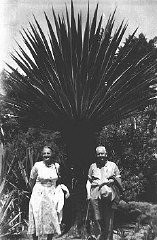
Oskar Schindler plants a tree on the Avenue of the Righteous Among the Nations at Yad Vashem. The Righteous Among the Nations are non-Jewish invididuals who have been honored by Yad Vashem, Israel's Holocaust memorial, for risking their lives to aid Jews during the Holocaust.
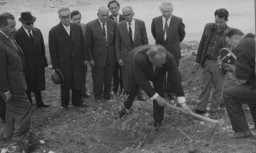
In Yad Vashem, the Israeli national institution of Holocaust commemoration, Oskar Schindler plants a tree in honor of his rescue efforts. Jerusalem, Israel, 1962.
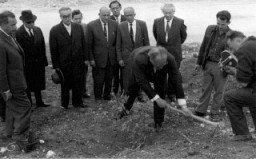
German Jews seeking to emigrate wait in the office of the Hilfsverein der Deutschen Juden (Relief Organization of German Jews). On the wall is a map of South America and a sign about emigration to Palestine. Berlin, Germany, 1935.

Horst Wessel leads his SA formation through the streets of Nuremberg during the fourth Nazi Party Congress in August 1929.
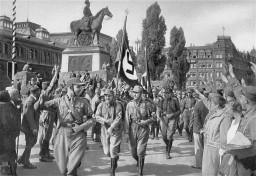
The house in Amsterdam where Tina Strobos hid over 100 Jews in a specially constructed hiding place. Her house was raided eight times, but the Jews were never discovered. Netherlands, date uncertain.
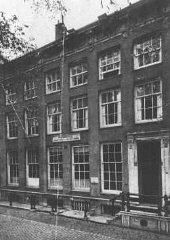
Located on Ulica Stara (Old Street), outside the Vilna ghetto, this building was used as a safe house by the ghetto resistance. Vilna, after July 1944.
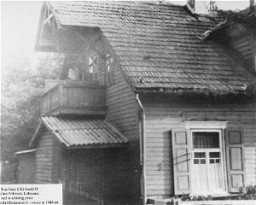
The house at Prinsengracht 263, where Anne Frank and her family were hidden. Amsterdam, the Netherlands. After 1935.

A view of the housing for Jewish displaced persons (DPs) at the Wetzlar DP camp in Germany, September 9, 1948.
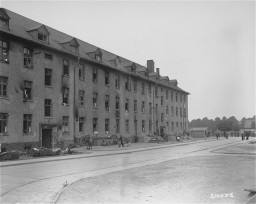
Former quarters of the German army converted into displaced persons housing. Bergen-Belsen, Germany, May 1945.

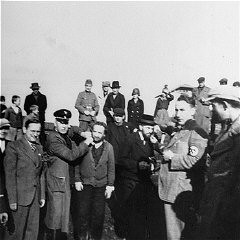
Humiliation of political prisoners: Social Democratic Party (SPD) inmates hold a placard which reads "I am a class-conscious person, party boss/SPD/party boss." Dachau concentration camp, Germany, between 1933 and 1936.

Twelve Hungarian Jewish physicians in the Iklad forced-labor camp. Iklad, Hungary, September 24, 1940.
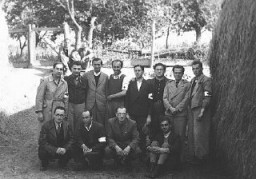
Selection of Hungarian Jews at the Auschwitz-Birkenau killing center. Poland, May 1944.
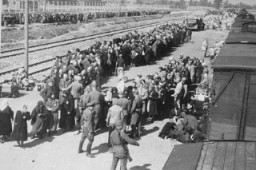
Jewish women and children from Subcarpathian Rus who have been selected for death at Auschwitz-Birkenau, walk toward the gas chambers. May 1944.
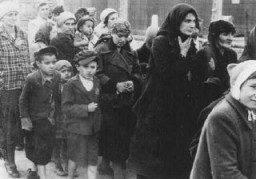
A group of Hungarian Jews rescued from deportation by Swedish diplomat Raoul Wallenberg. Budapest, Hungary, November 1944.
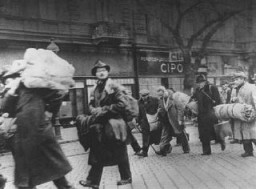
Conscripts in the Hungarian Labor Service march to a work site. Mateszalka, Hungary, September 1939.
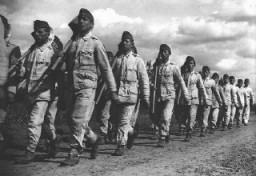
Conscripts of Hungarian Labor Service Company VIII/2 at work laying railroad track. Huszt, Hungary, 1942.
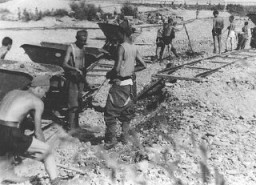
Hungarian Zionist leaders Otto Komoly and Rezso Kasztner (left), who negotiated with the SS for the release of Jews from Hungary. Budapest, Hungary, 1944.
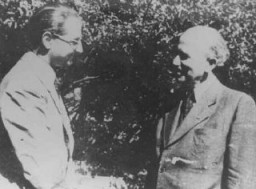
Children eating in a Warsaw ghetto street. Warsaw, Poland, between 1940 and 1943.
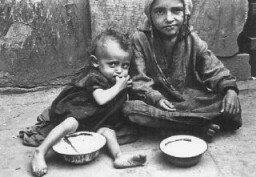
This identification card was issued to Sima Wajner, a Jewish resident of the Heidenheim displaced persons camp. The card identifies her as a former concentration camp inmate who had been imprisoned in the Stuffhof camp during the Holocaust. Card dated January 23, 1947.
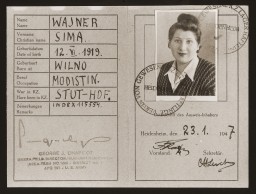
Identification card issued to Oskar Russ in the Feldafing displaced persons' camp. Oskar Russ was born in Poland in 1907. During the Holocaust, he was imprisoned in the Dachau concentration camp. After liberation, he was in the Feldafing displaced persons camp before immigrating in 1947 to the United States with his wife (whom he had married in Feldafing).
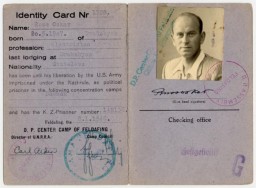
Identification card of Berthe Levy Cahen, issued by the French police in Lyon, stamped "Juif" ("Jew"). France, August 7, 1942.
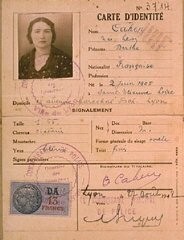
Identification pictures of a bartender from Duisburg who was arrested under Paragraph 175. Duisburg, Germany, August 27, 1936.

Identification pictures of a prisoner, accused of homosexuality, recently arrived at the Auschwitz camp. Auschwitz, Poland, between 1940 and 1945.
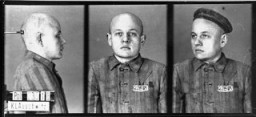
We would like to thank Crown Family Philanthropies, Abe and Ida Cooper Foundation, the Claims Conference, EVZ, and BMF for supporting the ongoing work to create content and resources for the Holocaust Encyclopedia. View the list of donor acknowledgement.